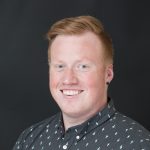Ask our experts: COVID-related mask questions [webinar recap]

As the conversation around COVID-19 and its implications to businesses and public health change on a regular basis, a lot of people have asked us about respirators and masks.
Watch the panel discussion now
For instance, a blog we wrote about using expired N95 respirators hit over 15,000 views in a week. As much as I wish that was normal, it never happens.
There's a lot of false information and half-truths spread around the internet about COVID-19. Along with giving us an opportunity to chat about everything to do with face masks, it gave us an opportunity to set the record straight for the general public.
We asked our in-house experts Jonathan McCallum, Mike Douglas and Tony Guarino if they'd be interested and they loved the idea.
If you have the time, you should watch the panel discussion. If for no other reason, Tony does a live demonstration of donning and doffing an N95 respirator around the 32 minute mark. That kind of information is very important right now.
Take me to the demo then
If you're dead set against watching panel discussions, that's ok too. We're recapping the highlights and some of the best questions in this post.
Is it practical to arrange fit tests right now?
It depends on the type of fit test.
If you are performing a quantitative fit test, it's possible to maintain distance between people and each person being fit tested receives their own mask which they can dispose of after the test is complete.
It requires a lot of client coordination but it is possible to perform quantitative fit testing without risking people's health.
It's hard to maintain distancing during a qualitative test because of how the test is set up. It also requires wearing a hood, even if a hood is being sanitized, it's not advisable to be sharing hoods.
The difference between N95, R95 and P95 respirators:
-
-
- N stands for non-oil and is only good in areas without an oily environment.
- R stands for oil resistant and is useful in work areas with some oily environments.
- P stands for oil proof.
-
The number refers to the filter efficiency with 95 being the least and 99 or 100 being the most efficient.
Does wearing a mask make a difference for preventing COVID-19 for the average person?
Masks and respirators are part of the COVID-19 prevention method and can add to prevention along with physical distancing and proper hand hygiene.
COVID-19 does not just infect people through their nose or mouth, it can also infect someone through droplets on the eye.
If someone does not have the proper training to don and doff a mask, they run the risk of contaminating themselves or putting themselves in higher risk areas like large crowds because they have a false sense of security.
Why healthcare workers shouldn’t use respirators with exhalation valves:

Exhalation valves are added to N95s to improve comfort to the person wearing the mask and extending the life of the mask. When the wearer breathes in, the mask will filter the inhaled air as a standard N95 would. When the wearer breathes out, the exhalation valve opens to allow the air to leave rather than filtering it. The exhalation valve can increase the life of the mask because it's not absorbing moisture.
In a healthcare setting, it means the healthcare worker is being protected from their environment, but the people around the worker are being exposed to the worker's germs.
Our panel of experts also covered these common questions like:
-
-
- What is the difference between a surgical mask and an N95 respirator?
- How long can someone wear a mask for?
- What is a respirator fit test?
- What is the difference between a qualitative and quantitative fit test?
-


